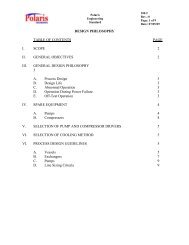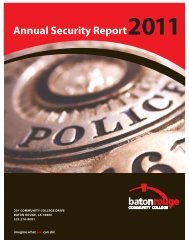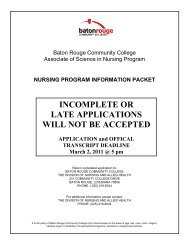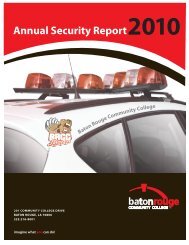Distance Education Models and Best Practices
Distance Education Models and Best Practices
Distance Education Models and Best Practices
You also want an ePaper? Increase the reach of your titles
YUMPU automatically turns print PDFs into web optimized ePapers that Google loves.
ACADEMY ADMINISTRATION PRACTICEJUNE 2011Introduction – Growth <strong>and</strong> Importance of <strong>Distance</strong> <strong>Education</strong>The number of higher education institutions around the world offering distanceeducation programs has increased significantly in the last two decades, <strong>and</strong> mostcountries have seen a growth in distance education enrollments. The literaturereviewing distance education trends, the evolving methods of delivery, <strong>and</strong> emergingdistance technologies is extensive. Even still, the rapid growth of technology in thisfield of education has outpaced research on practice, design, <strong>and</strong> models. Oneestablished distance education researcher noted that “Because technologies asdelivery systems have been so crucial to the growth of distance education, researchhas reflected rather than driven practice.” She goes on to explain that this form ofteaching has evolved from a specialized form of education to “an important conceptin mainstream education.” 1One of the reasons that distance education has become <strong>and</strong> remained so prevalent, inparticular for higher education, is that various studies have validated its practice –revealing no significant differences in learning outcomes between traditional<strong>and</strong> distance students. A recent study, published in 2005, found this to be the casewhen comparing students who were delivered the exact same content via one of threesetups: in a traditional classroom, via online course management software, <strong>and</strong>through a CD-ROM, respectively. The authors measured no significant change inoverall student satisfaction between the three groups. 2 A twenty year meta-analysis,released last year, went so far as to argue that in 70 percent of cases students takingcourses by distance education actually outperformed their student counterparts intraditionally instructed courses. 3 Clearly, distance education is here to stay as a formof instruction <strong>and</strong> its proliferation continues to change the l<strong>and</strong>scape of highereducation.One definition of distance education, from as far back as 1990, depicted the use oftwo-way electronic communication as a central tenant. 4 It is safe to assume, thatvirtually all current distance courses, even those extending to the world’s most remoteregions, incorporate the use of communications technology into theirimplementation. Moreover, it is now commonplace for campus-based students toengage with their professors via email or internet-based course management softwarewhen outside of the classroom. Students who attended university in the last ten years1 Gunawardena, C., <strong>and</strong> McIsaac, M. 2004. “<strong>Distance</strong> <strong>Education</strong>.” H<strong>and</strong>book of Research for <strong>Education</strong>al Communications<strong>and</strong> Technology: Second Edition. Jonassen, D. http://www.aect.org/edtech/14.pdf, p.2.2 Skylar A. et al. 2005. “<strong>Distance</strong> <strong>Education</strong>: An Exploration of Alternative Methods <strong>and</strong> Types of InstructionalMedia in Teacher <strong>Education</strong>.” Journal of Special <strong>Education</strong> Technology, 20, 3, pg 25-33.3 Shachar M. <strong>and</strong> Nuemann Y. 2010. “Twenty Years of Research on the Academic Performance Differences BetweenTraditional <strong>and</strong> <strong>Distance</strong> Learning: Summative Meta-Analysis <strong>and</strong> Trend Examination.” MERLOT Journal ofOnline Learning <strong>and</strong> Teaching, Vol. 6, No.2.4 Hilpe D. <strong>and</strong> Fleming S. 2002. “<strong>Models</strong> for <strong>Distance</strong> <strong>Education</strong> in Critical Languages: Evolving Definition of<strong>Distance</strong> <strong>Education</strong>.” New Technologies <strong>and</strong> Language Learning: Cases in the Less Commonly Taught Languages. Spreen, C.© 2011 Hanover Research ‐ Academy Administration Practice4
















